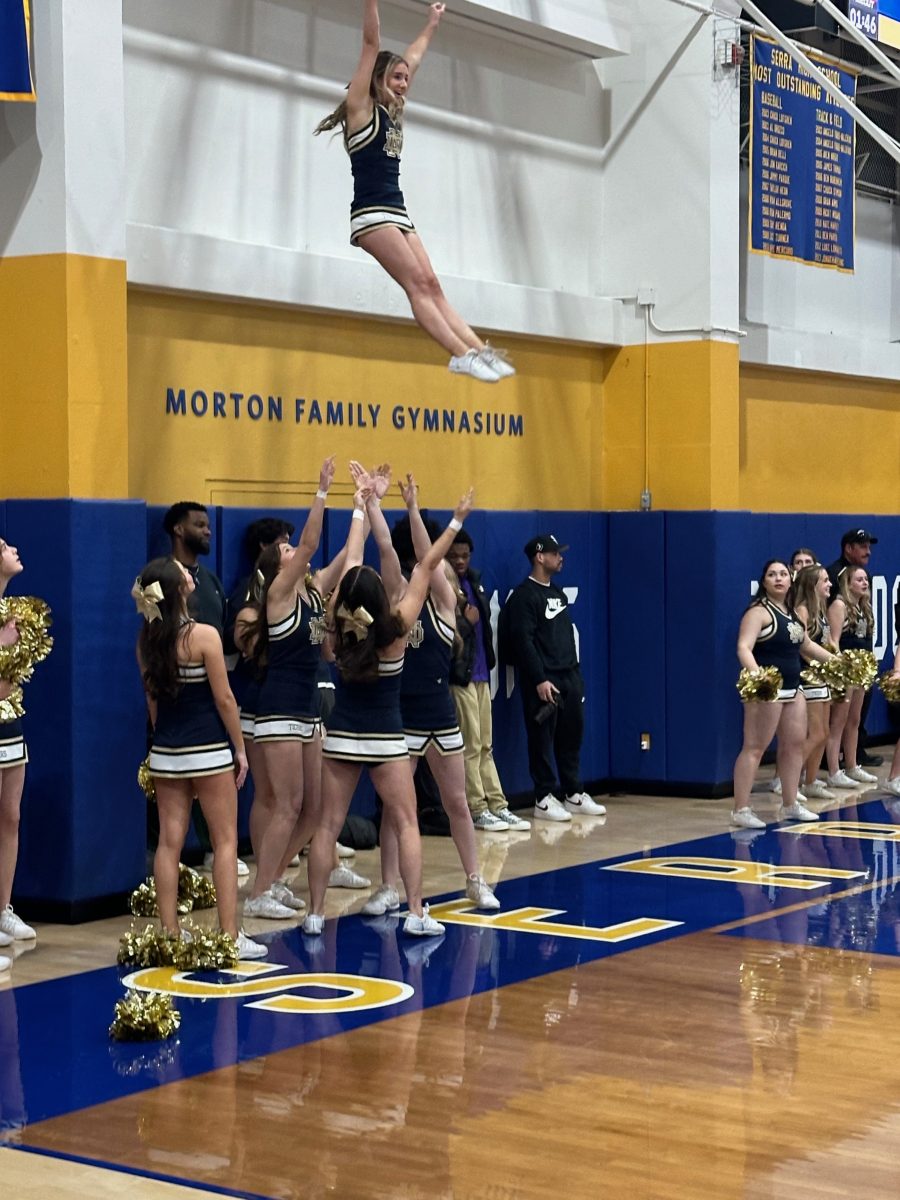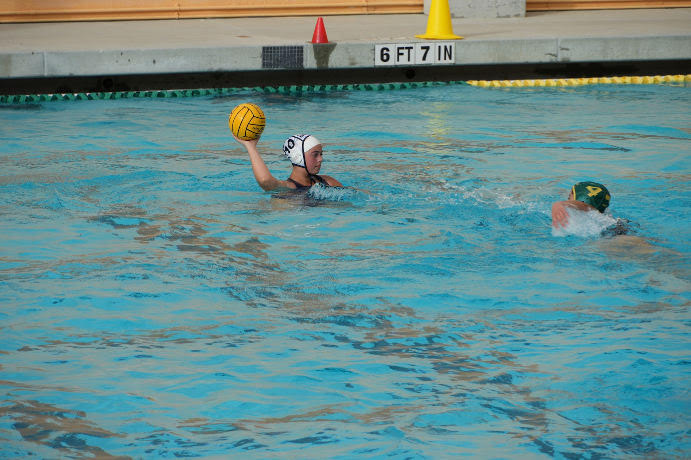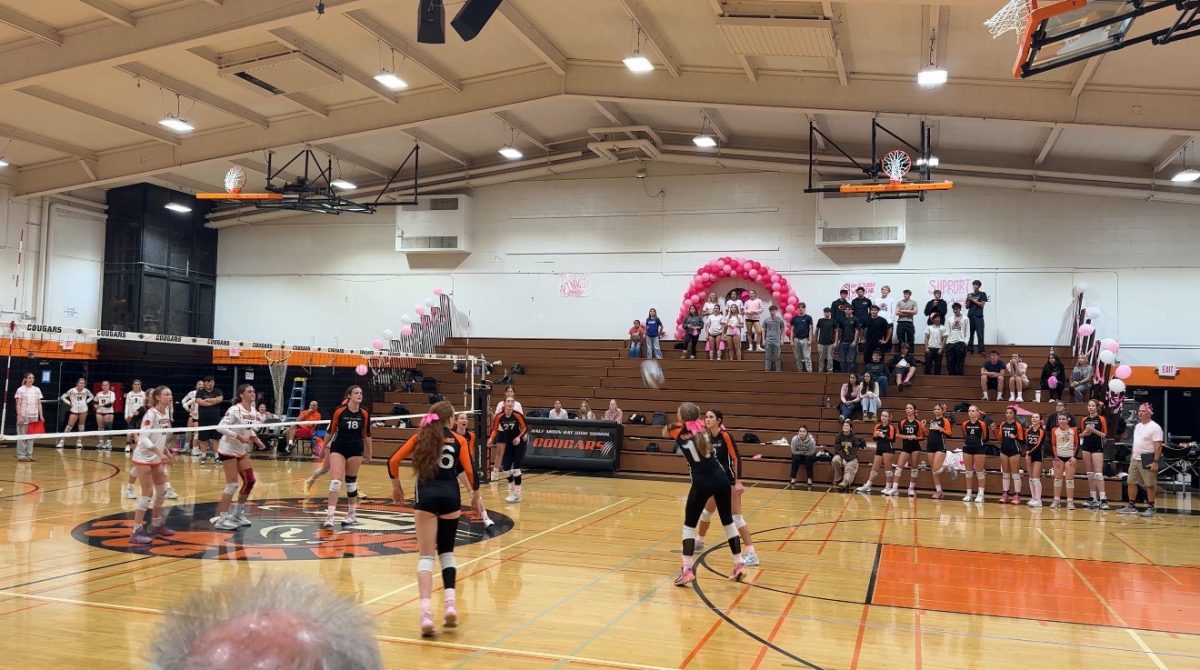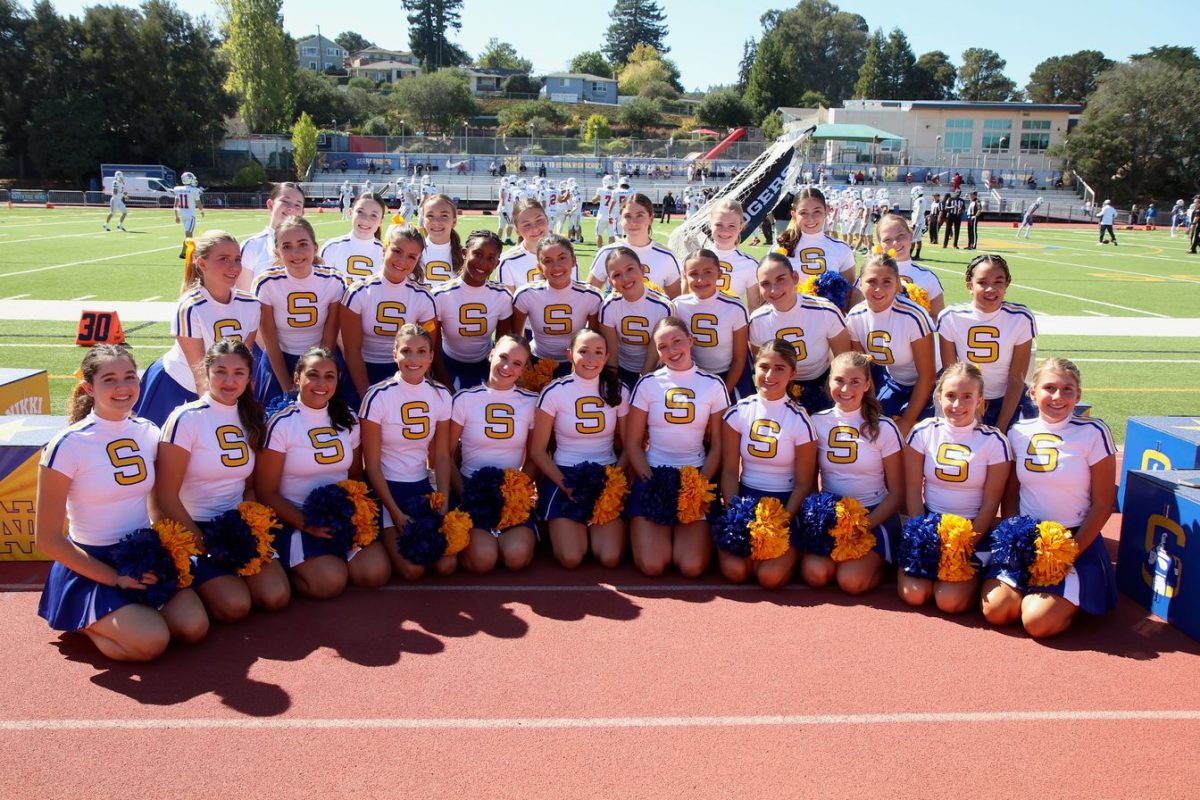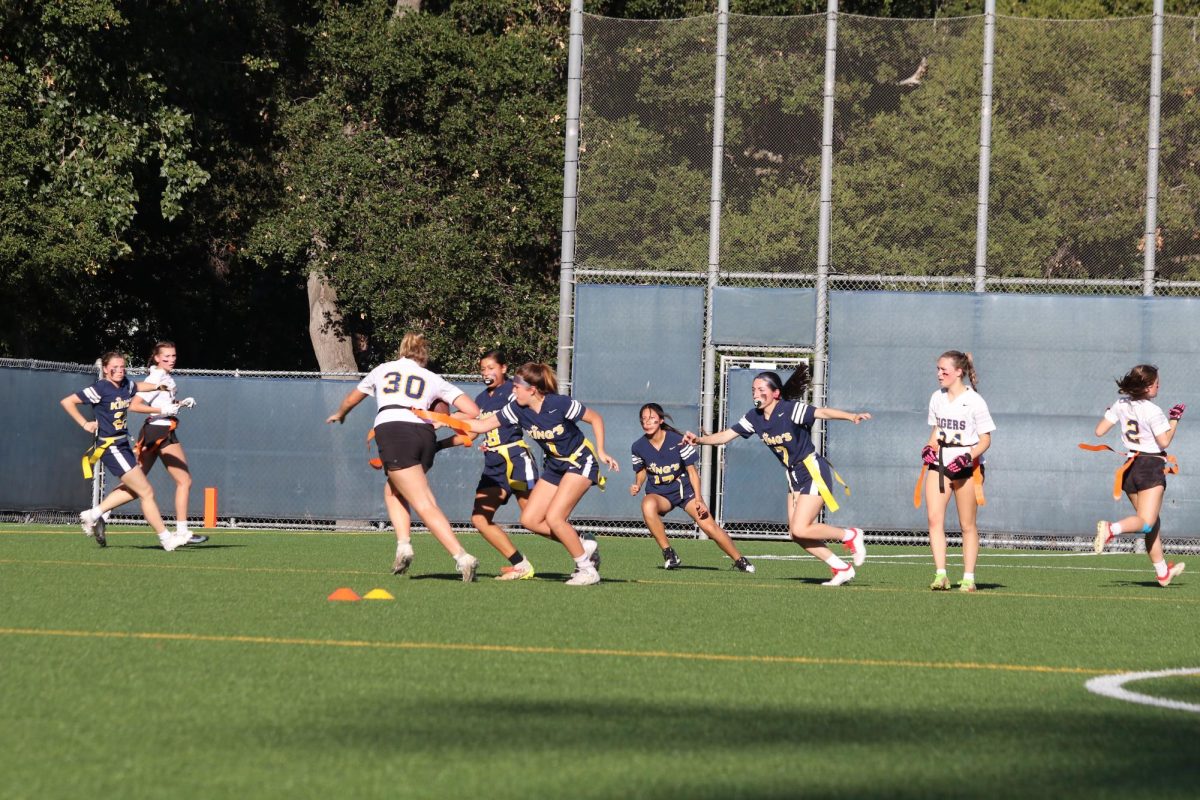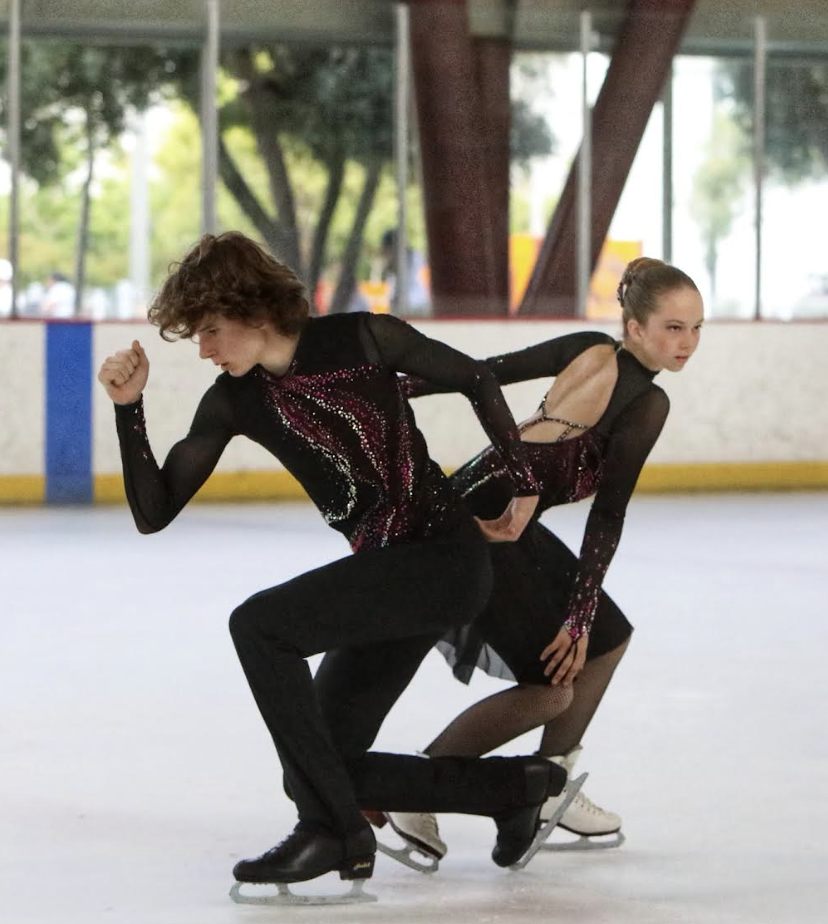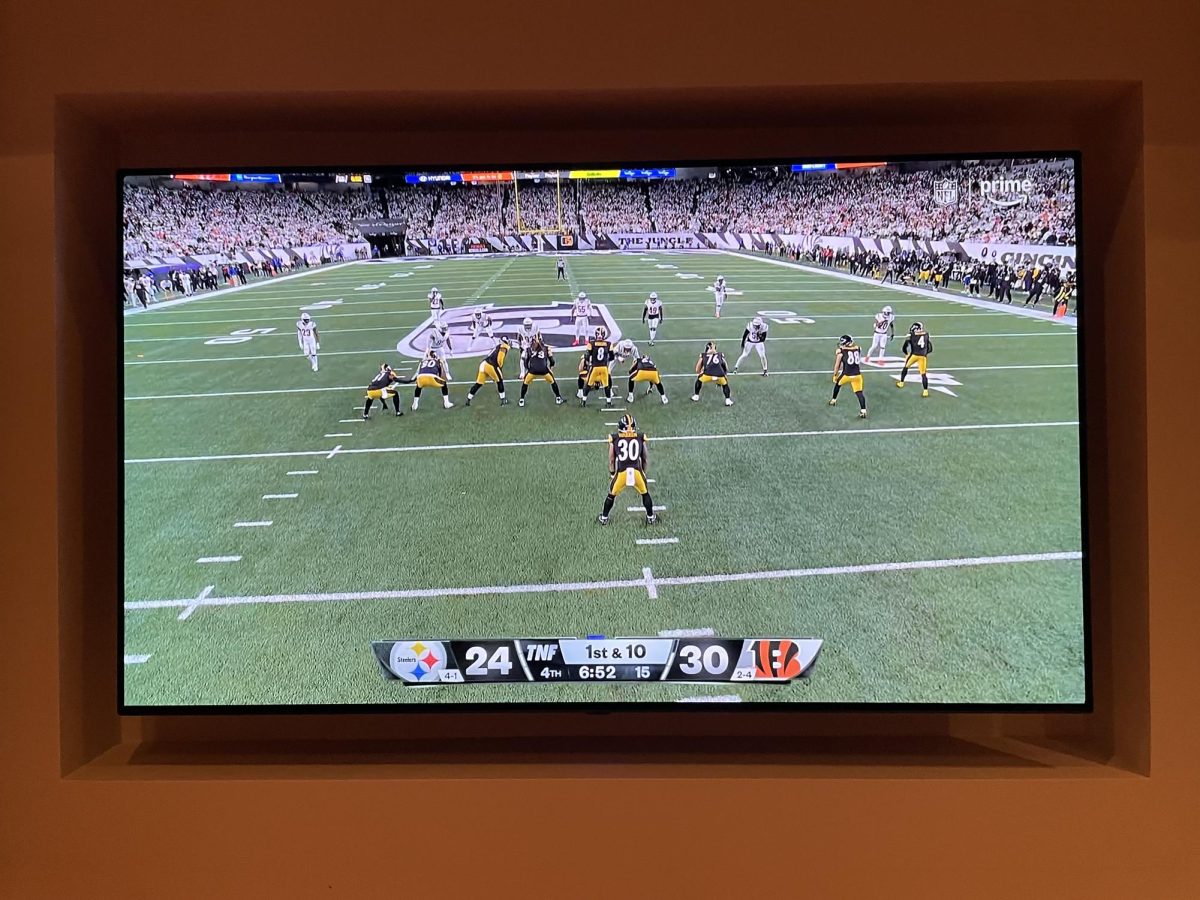One of the main components of the sport of cheerleading is stunting. Stunts are building performances that typically include one flyer, two bases and one backspot. These four athletes complete a single stunt group. Within the group they can perform basic two-legged stunts, one-legged stunts, extended stunts, basket tosses and more.
With multiple of these four-person groups, a pyramid can be formed. A pyramid can be made with two or more groups that are in a structure with a clear connection between all of the flyers.
However, cheerleading is also combined with chants, verbal cheers, dances, tumbling and jumps. Therefore, a new emerging sport that eliminates all of the crowd-leading elements of cheer is STUNT. Capitalized for a reason, it is a sport that solely focuses on the competitive aspects of cheerleading and is one of the most rapidly growing female sports in the country.
The groups are not decked out with the typical performance makeup, high-ponytail and large bow and bedazzled uniforms that cheer is usually associated with. Instead, the athletes wear long- sleeve uniforms, similar to those worn in volleyball, paired with spandex shorts. Athletes can wear their hair how they prefer and are not required to wear any makeup.
Similar to cheer, STUNT also partakes in competitions. Instead of having one single performance, there are individual groups and teams that compete against each other in a four-quarter game. The quarters are split by skill and increase in difficulty each round.
The first round is partner stunts. These stunting routines are all 30 seconds in length and function in increasing levels of difficulty. The number of groups needed for the routine depends on the difficulty of the routine; easier routines tend to have more groups, whereas the harder routines require only one or two groups to do so.
The second quarter is pyramids and tosses. These stunt routines are also 30 seconds in length and similarly work in progression of difficulty. Depending on the level of routines 8, 12 or 16 athletes are required to perform.
The third quarter is jumps and tumbling. These tumbling and jump routines are also 30 seconds in length and similarly work in progression of difficulty. Each jump and tumbling routine calls for seven athletes and progresses with complexity. For this quarter, coaches typically choose the most talented athletes, as only some specialize in tumbling and jumping along with stunting.
The final and fourth quarter is team routines. This quarter combines all of the components from Quarters 1 through 3 into 90-second routines.
Each quarter is judged on rounds as the teams compete head-to-head and side-by-side on the same mat.
The sport of cheerleading has been around for decades, yet the off-branch of STUNT is just emerging. Many officials and athletic departments are growing interested in the sport and are beginning to incorporate a program into their schools, ranging from middle schools all the way to college-level athletes and beyond. The rapid growth of the sport has caught the attention of NDB, with hopes of including it as a spring sport in 2025.

